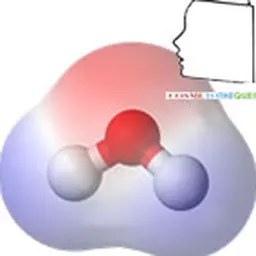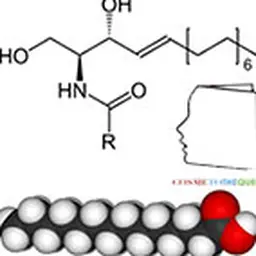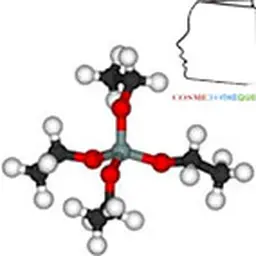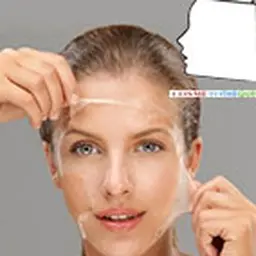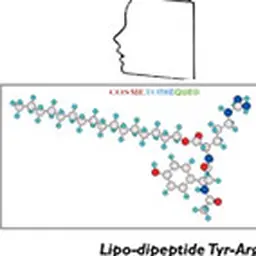![By Rock Currier (http://www.mindat.org/photo-237295.html) [CC-BY-3.0 (http://creativecommons.org/licenses/by/3.0)], via Wikimedia Commons](https://d2aabgjce9enf.cloudfront.net/main/media/content/5/c/5cf74a4a92ef1b89e0549ec097048f7d3268ec4a--md-noborder.webp)
Known since ancient times - the word comes from the Arabic bawraq or the Persian boûraq (white - brilliant), borax is an odourless and colourless salt that comes in the form of flakes or powder. It can be irritating. Borax is a mineral species of the formula (Na2B4O7-10H2O). It is a boron ore also called sodium tetraborate decahydrate or sodium borate.
It has been used since the Middle Ages, when it was imported from Tibet and known under names such as tincar, tinckal, or Chrysocolla, and arrived in Europe by the Silk Road. Borax is the ore of boron. It is used as a starting material for the manufacture of boric acid and sodium perborate.
Its uses are numerous: - Glass industry. Borax is used in the composition of borosilicate glasses (such as Pyrex) where its melting property makes it possible to lower the melting temperature and limit fuel consumption. It is also used for the decoration of porcelain, where it increases the fluidity of enamels. - Metallurgy. Alchemists already used borax as a flux in the melting and welding of metals. It is still used as such by boilermakers for so-called"forge brazing" where it avoids overheating of iron or welded steel and avoids oxidation within the weld as well as to remove impurities. - Besides the fact that borax is a flux for slag, its wettability and reactivity are exceptional. When forging, sprinkling the borax allows the formation of a protective film that spreads on the surface, will absorb slag and avoid the formation of oxides. This remarkable property, poorly explained at the time, contributed to give a mysterious dimension to the blacksmith's know-how. - Nuclear industry. Boron (in the form of"boron-10") is used in nuclear reactors as neutron absorbents in liquid or solid form. In its liquid form, the operator doses boric acid to obtain the desired neutron balance (nuclear reaction control). In addition, the water tanks of the safety injections are also highly"bounded" in order to stifle the nuclear reaction in the event of an accident. - Biocide. As an insecticide, it is mixed with icing sugar in equal parts, in the form of white powder sold in pharmacies, in order to attract cockroaches (or cockroaches) whose digestive system will be gradually destroyed. The use as insecticide is also made with wooden frames: diluted in water, borax penetrates into the wood and allows an economical treatment against wood-boring insects. Borax is known as a good detergent and antiseptic. - Other uses. Borax is used in the manufacture of fertilizers, soap, detergents… It is also found in electronic components or transmission fluid. - In the past, it was also used in qualitative analytical chemistry to identify the ions present in a solution: by moistening a little borax powder with a drop of solution by means of a platinum handle and carrying the whole in an air-methane flame, a pseudo-vitreous mass ("the borax bead") was formed whose colour oriented the analyst on the composition of the solution. - The flame retardant qualities of borax are sought after in the treatment of natural insulation materials, such as cellulose wadding. - Borax, in the form of sodium tetraborate, is also used in taxidermy for its antiseptic but also tanning properties, just like the"arsenical Bécoeur soap".
In cosmetic products
Its use has been mainly as an alkaline agent, or"alkaline reserve" (Sorenson's basic solution), but also because it has in particular neutralizing properties. As a result, applications can be found in make-up removal products. But one of the main uses has been as a neutralizing agent in particular emulsions: Beeswax/Borax Emulsions.
They are emulsions of a rather particular type. Emulsions naturally of the Oil-in-water type, but often rich in fatty phase and quite consistent, they are called"beeswax/borax" emulsions. They belong to the great class of cold-creams. Used for many applications, cleansers, care, hair applications, they are based on a specific formulation technique. The principle consists in neutralizing the acid fraction of beeswax by the soda released when the borax is dissolved.
These are mainly oil-in-water emulsions when the emulsifying system consists mainly of the Beeswax/Borax pair.
Beeswax is a natural wax containing many substances, wax esters, hydrocarbons, fatty alcohols, but especially about 20% fatty acids (Acid Index: 17-24), including some specific acids such as lignoceric acid (C23) and cerotic acid (C25).
Borax dissociates when dissolved to form soda: Na2B4O7 + 7H2O = 2NaOH + 4H3BO3
The soap is then obtained by the action of soda released by borax on these fatty acids: 2C25H51COOH + Na2B4O7 = 2C25H51COONa + 4H3BO3
Example of an old formula: - Beeswax: 16.67 - Mineral oil: 50,00 - Borax : 0.83 - Demineralized water: 32.50 Source : Cosmetics Science and Technology- Edward Sagarin - 1957.
These emulsions are naturally hydrophilic, so more of an oil-in-water type. However, by using suitable lipophilic surfactants, such as lecithins or fatty acid esters such as glycerol oleate or sorbitan isostearate, stable water-in-oil (W/O) emulsions can be formulated from this formulation system. Many waterproof mascara formulas have been proposed on this formulation basis. However, the use of borax has been very common for many years.
The amount of borax used must be stochometrically equivalent. A borax defect leads to grainy structures, an excess to textures that are too hard and too thick.
The use of this formulation technology has gradually disappeared, only to reappear more recently in the so-called"natural" formulation. It is quite common to find on websites implementation formulas using this technology. Here is an example: • cetyl palmitate (synthetic whale white) : 16g - beeswax : 8g - almond oil : 55g - benzoin tincture : 4g - borax (sodium borate) : 0.5g - rose water : 16.5g ( Source: http://www.ecolowoman.fr/2010/12/la-creme-des-grands-froids)
Sodium Perborate
Sodium perborate is a white crystalline product with a triclinic mesh. It is not an adduct but a trihydrate of well-defined structure NaBO2.H2O2.3H2 O.
Sodium perborate finds its main (if not only) application in household detergents in which, in mixture with detergents, calcium sequestering agents, sulphate and sodium silicate, it constitutes the bleaching agent: it is a convenient vehicle for hydrogen peroxide in detergents. Its concentration is between 5 and 25 % by mass.
Sodium perborate can be produced in two stages from borax Na2B4O7-10H2O, sodium hydroxide (NaOH) and hydrogen peroxide (H2O2) via sodium metaborate (NaBO2).
Sodium perborate is used in particular as an'active oxygen' source in detergents and detergents, as well as in cleaning and bleaching products. It hydrolyses to borate and hydrogen peroxide (H2O2) when in contact with water, the peroxide reacting with tetraacetylethylene diamine (TAED) in the detergents to release peracetic acid (CH3COOOH), "An"activator" whose action starts at a lower temperature than hydrogen peroxide - from 40°C for (CH3COOOH) against more than 60°C for (H2O2) - and is less aggressive for dyes and textiles than that of sodium hypochlorite (NaClO).
Applications in industrial bleaching have practically disappeared, as have marginal uses in pharmaceuticals and cosmetology.
| Contribution made by Jean Claude Le Joliff A biologist by training, Jean Claude Le Joliff has been an R&D man for many years. Successively in charge of R&D, then Research and Innovation in a large French cosmetics and luxury group, and after an experience of creating a research centre (CERIES), he turned to innovation management. He was also Associate Professor at the University of Versailles Saint Quentin (UVSQ) and remains a lecturer in several specialized courses: ISIPCA, IPIL, ITECH, UBS, UCO, SFC etc. He is the founder of inn2c, an R&D and Innovation consulting company. Consultant for several international companies, he has actively participated in projects such as Filorga, Aïny, Fareva, and many others. He created the Cosmétothèque®, the industry's first conservatory of crafts and know-how. |




